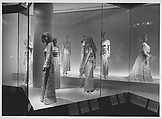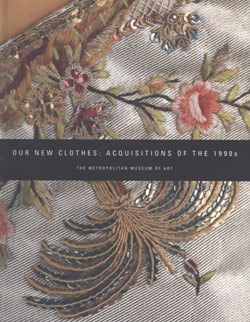Dress
Not on view
The pigeon-breasted silhouette favored in the first decade of the twentieth century was called the monobosom. This wide well-padded expanse of bosom was the preferred ideal that persisted until World War I. Its massive pouch-like shape was a consequence of the lowered topline of the corset. The breasts were allowed to hang freely, so that their apex, if it were possible to discern (it is not), would appear to fall near the base of the sternum. Pulchritude was the effect essentially sought, but with no disclosure of the breast's natural form. Even in very décolleté evening gowns, cleavage was not desirable.
This image cannot be enlarged, viewed at full screen, or downloaded.
This artwork is meant to be viewed from right to left. Scroll left to view more.












